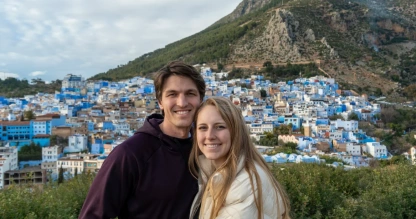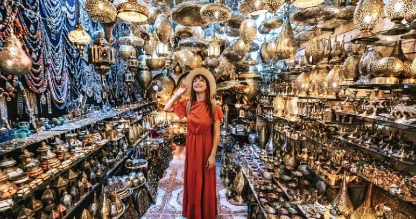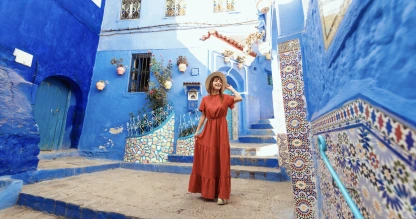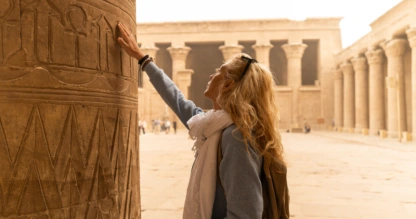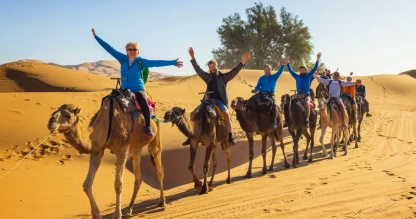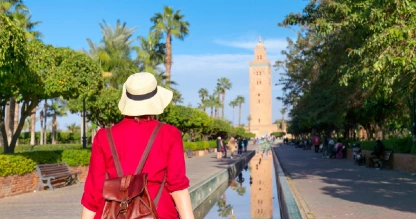
Fez in Morocco: Medina and Attractions
Fez, Morocco is one of the world's oldest and continuously inhabited cities. The city was founded by Idris I in the 9th century. The city grew into a vibrant center of Islamic learning and culture. It reached its peak during the 13th-14th centuries and replaced Marrakesh as the kingdom's capital.
The travelers can enjoy a breathtaking trip in time through this medieval city. The streets lead to a UNESCO World Heritage Site that encompasses one of the world's largest car-free city areas. The University of al-Qarawiyyin, established in 857, holds the distinction of being the world's oldest continuously operating institution of higher education.
The attractions in the city place its visitors in authentic cultural experiences. The historic Chouara Tannery, a working tannery for more than a millennium, is an expression of the city's rich history. The Medina of Fez is among the largest and best-preserved ancient Arab-Muslim towns. The madrasas, palaces, mosques, and fountains of the Marinid period still bear witness to this remarkable city.
Wandering the Medina: The Heart of Fez
Medieval Medina of Fez draws visitors into an ageless world. This labyrinthine wonder stands unique among urban spaces worldwide. Its visitors traditionally depart feeling merely and blissfully lost in its enchanted labyrinth of paths and secrets.
UNESCO World Heritage status
UNESCO awarded the Medina its prestigious World Heritage status in 1981. The site is among the largest and best-preserved medieval towns in the Arab-Muslim world.
The unpaved city center still retains the original characteristics and uses even after exposure to modern influences. Besides, it had an impact on architecture and monumental art between the 12th and 15th centuries in North Africa, Andalusia, and Sub-Saharan Africa. The existence of this living museum will give future generations a chance to experience its authentic atmosphere.
Getting lost in the alleyways
Getting lost in Fez is an initiation—just as it's supposed to be. Local guides tell stories of how builders designed the medina like a maze to throw off potential invaders.
Today, this ancient defense offers travelers on Morocco tours unforgettable memories as they wander through its 9,000 alleys, the world’s largest walled, pedestrian-only neighborhood, where streets can be so narrow that only two people can squeeze past each other. The tight alleys, as the world's largest walled, pedestrian-only urban neighborhood, sometimes offer barely enough room for two individuals to pass one another.
Rusty old facades hide beautiful interiors throughout the medina. A lost traveler can find himself or herself upon a beautifully carved doorway into an unsuspected oasis. The best real experience most often stems from indulging in this sense of being lost.
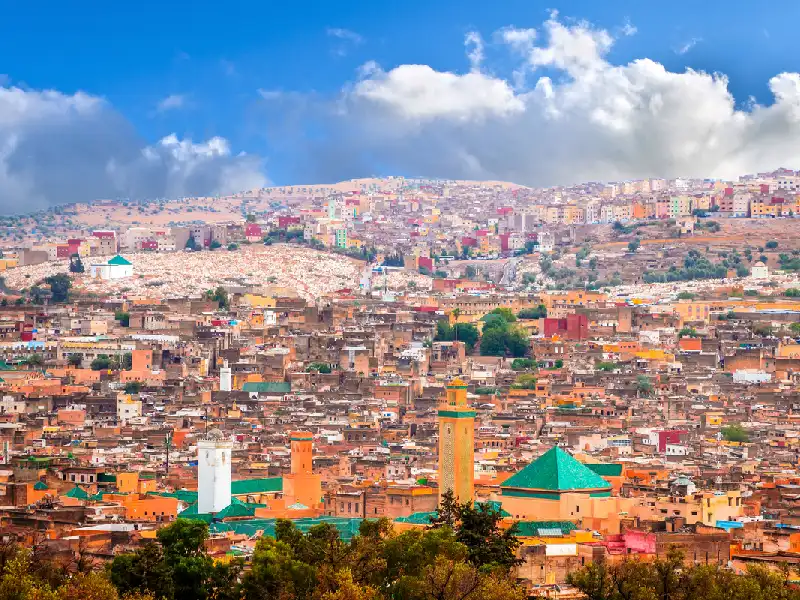
Shopping in souks
The medina souks are hectic shopping experiences that you won't be able to find elsewhere. The trade guilds have run the markets in the same way for over 1,200 years. The Henna Souk is at the end of Talaa Kebira street, with old-fashioned henna and natural cosmetic products. The Attarine Souk intrigues visitors with pungent spices and vivid colors.
Bargaining is a significant part of the souk experience. Start low with an offer of half price and work your way to the middle with a smile. This friendly negotiation teaches as much about culture as it does about commerce.
Meeting locals and spontaneity
Unexpected encounters often become the most treasured memories in Fez. You might catch sight of traditional artisans at work or see horses forcing their way through thronged market alleys with soft drink deliveries. These chance encounters reveal the medina's actual daily heartbeat.
A born-in-the-medina local guide who "knows it and the people like the back of his hand" can enhance your experience. Those authentic connections might lead you to local festivals or remote workshops where traditional crafts continue to thrive.

Top Attractions in Fez You Shouldn’t Miss
Fez's medina has several must-see landmarks that go beyond its winding streets. These iconic spots give you a deep look into the city's rich culture and artistic traditions.
Chouara Tannery: A sensory experience
The historic Chouara Tannery has been running since the 11th century. It stands as one of the world's oldest working leather tanneries. You can watch the traditional leather-making process from the terraces of nearby leather shops. Workers stand waist-deep in stone vessels filled with natural dyes and various liquids.
The tannery's unique smell comes from a mix of pigeon droppings, cow urine, and natural tanning materials. This is all part of the real experience included in the Morocco travel packages. Most shops give you sprigs of mint to hold under your nose while you watch the colorful scene below.

Al-Attarine Madrasa and Islamic art
The Marinid Sultan Uthman II Abu Said built Al-Attarine Madrasa in the 14th century. This architectural gem shows Morocco's finest Islamic design. You'll find it near the spice and perfume market.
The former theological college features detailed cedar wood carvings and delicate stucco work. Its magnificent zellige tilework surrounds a central courtyard with a marble fountain. The madrasa's small size makes its artistic details even more striking. You get a concentrated display of Moroccan craftsmanship.
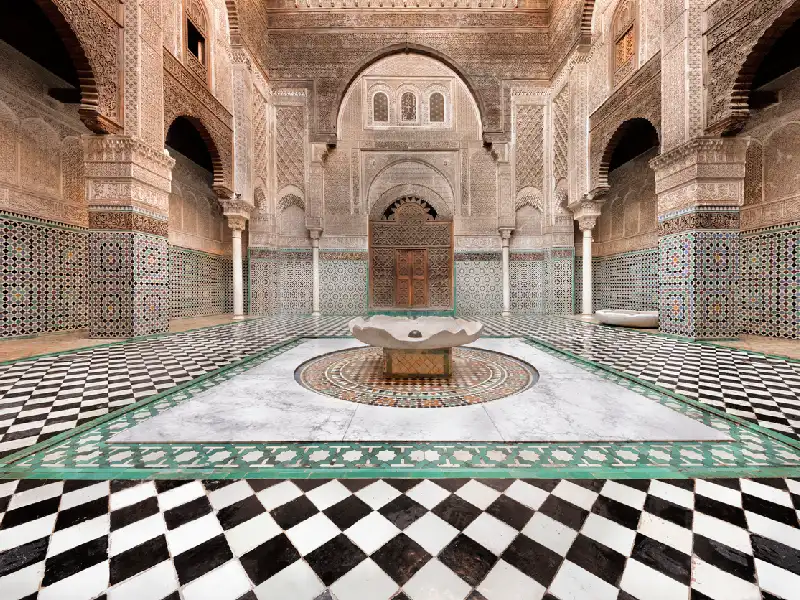
The Blue Gate and its surroundings
Bab Boujloud (the Blue Gate) welcomes visitors into Fez el-Bali. Built in 1913, this ornate gateway shows off a stunning blue facade outside and green tiles inside. The blue represents Fez's color while green stands for Islam. The gate leads to Talaa Kebira, the medina's main street. The area buzzes with life. You'll find many cafés and restaurants where you can sit back and watch people go by.
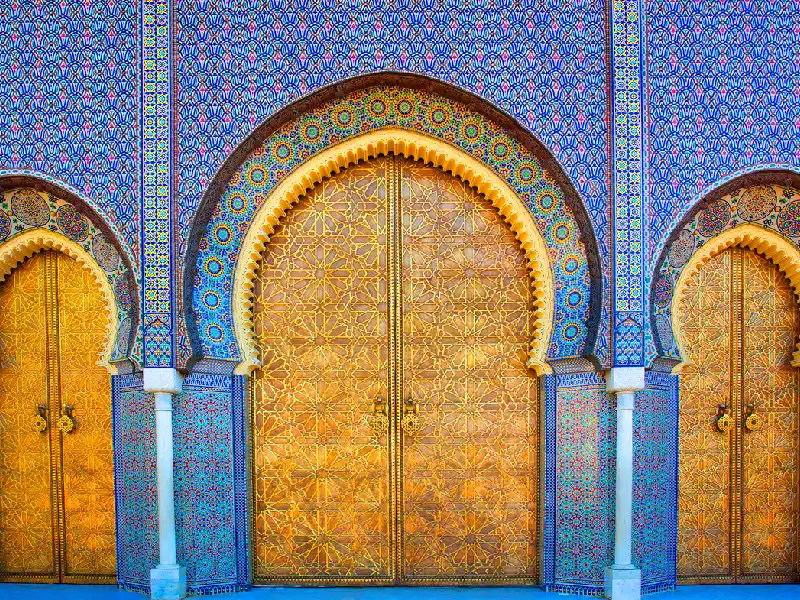
Sunset views from the Merenid Tombs
The Merenid Tombs sit on a hill north of the medina. These 14th-century ruins might look modest, but they offer the best views over Fez. The climb up rewards you with amazing panoramas of the medina. The view becomes magical at sunset when the city glows amber. This spot helps you grasp how big Fez's medieval city really is. It's a must-visit for photographers and anyone wanting to see this ancient city's full scope.
Where to Stay, Eat, and Relax in Fez
The authentic Fez experience comes alive through its traditional lodgings, local food, and centuries-old relaxation rituals that have characterized Morocco's culture throughout the centuries.
Staying in a traditional riad
Riads realize Morocco's architectural history through their distinctive design - traditional houses built around garden courtyards. The ancient houses, which originated in Persia, have various stories that enclose central courtyards with fountains and fruit trees. Guests enjoy quieter visits and more personalized service compared to regular hotels. Riad Idrissy stands out with its 400-year-old restored building and the adjacent "Ruined Garden" restaurant filled with authentic Fassi character.
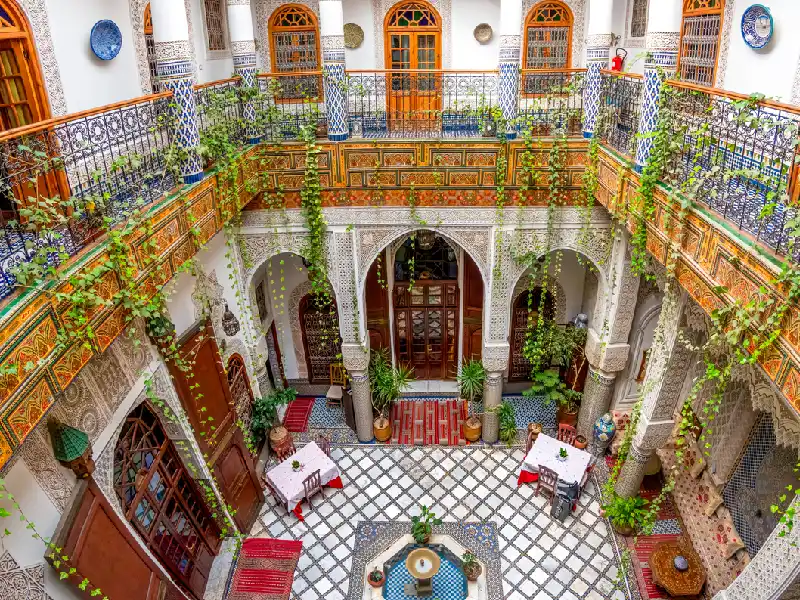
Best restaurants in the Medina
Fez's restaurants range from upscale eateries to authentic street food stalls. Dar Roumana serves innovative Moroccan cuisine with emphasis on fresh local ingredients. Café Clock is a popular choice and serves everything from their signature camel burger to vegetarian options. The Ruined Garden delivers a unique dining experience at a restored courtyard house and serves delicacies like seven-hour lamb "Mechwi" and chicken pastilla.
Trying a local hammam experience
Hammam rituals have cleansed both body and spirit in Morocco for centuries. The traditional ritual takes you through steam rooms of different heats, followed by black soap exfoliation and massage. Black soap, a blend of argan oil and mint, is utilized to scrub away dead skin. Les Bains Amani at Palais Amani lets you treat yourself to a private hammam with rose water foot rituals and traditional skincare.
Evening tea culture and rooftop views
Moroccan tea ceremonies are far more than just a drink - they're a symbol of warmth, hospitality and tradition. Green tea is carefully blended with fresh mint and sugar by local tea masters. Sidi Abdullah's teashop has been concocting custom blends since 1969 using six herbs including geranium, verbena, and various types of mint. The Rooftop offers the medina's highest point from which visitors can watch stunning sunsets over the ancient city as jasmine scents mingle with muezzin calls.
Tips for a Smooth Visit to Fez City
A good preparation plan can turn your Fez visit from an overwhelming experience into something truly magical. The unique layout and cultural elements of this ancient city need some advanced knowledge in order to navigate with ease.
How to get around the Medina
Cars cannot enter the old Fez medina, so you will need to explore it on foot. The medina is on a hill - uphill streets tend to lead to gates and exits, and downhill paths take you deeper into its interior. Download offline map applications. Such applications work amazingly well despite the fact that there is a maze of small streets.
When to visit and how long to stay
The best time to visit is during spring and autumn when the weather is pleasant with little rainfall. The temperatures are 37°C (99°F) in summer, and it is cooler in winter with fewer tourists. You can see the major attractions in 1-2 days, but 3+ days provide a more extensive experience. Avoid scheduling your visit on a Friday since most of the shops and points of interest close for Islamic prayer.
Safety, etiquette, and local customs
Both men and women should dress modestly by covering their shoulders and knees, particularly in the residential areas. Women should stay away from tight-fitting clothes. The right hand is used to eat, pass items, or shake hands. Only the Hassan II mosque in Casablanca is accessible to non-Muslim visitors.

FAQS
Q1. Why is Fez, Morocco famous?
Fez is famous for its historic medina, one of the largest car-free urban zones in the world, its ancient universities, and vibrant artisan traditions.
Q2. Is there a Medina in Fez Morocco?
Yes! The Fez el-Bali medina is a UNESCO World Heritage site, with over 9,000 winding alleys, bustling souks, mosques, and centuries-old madrasas.
Q3. Is Fez worth visiting?
Absolutely—Fez is one of Morocco’s cultural capitals. Its maze-like streets, traditional tanneries, and rich history make it a must-see destination.
Q4. What to do in Fez for a day?
Spend the day wandering the medina, visiting the Al-Qarawiyyin University, shopping in the souks, and ending with a traditional Moroccan meal.
Q5. What is the best part of Fez to stay in?
Most visitors stay inside Fez el-Bali for the full medina experience, often in beautifully restored riads that offer authentic Moroccan charm.
Q6. What food is Fez famous for?
Fez is renowned for dishes like pastilla (a sweet-savory pie), couscous, tagines, and a variety of spiced street foods and pastries.
Ready to discover Morocco's magic? Explore our Morocco Travel Packages and enjoy the best of Middle East trips!

